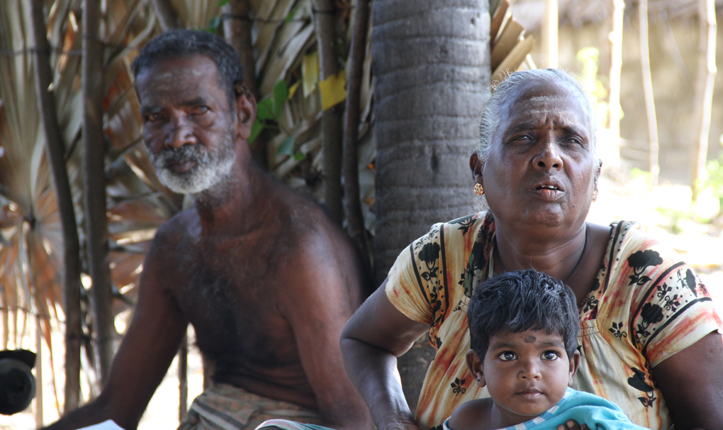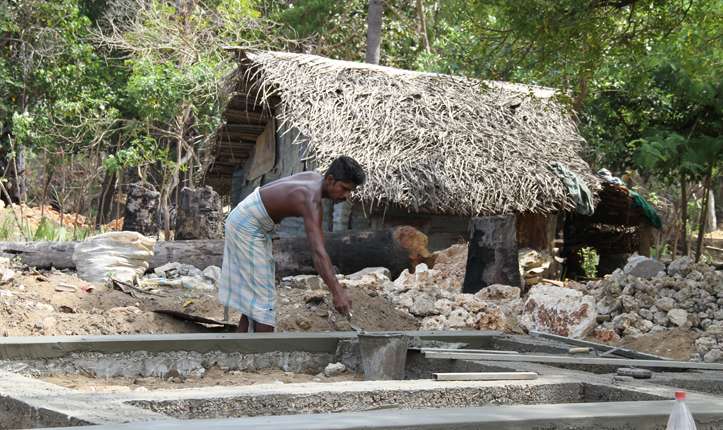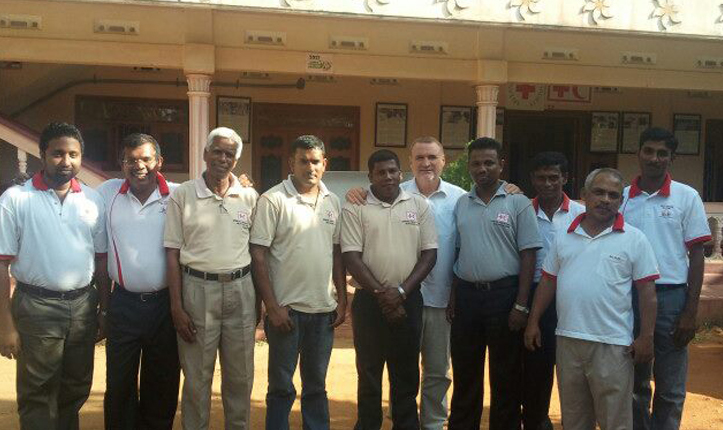Livelihoods absolutely vital in northern Sri Lanka
A blog note by Bob McKerrow – IFRC Head of Delegation in Colombo.

19/08/2012 – Vavuniya, Sri Lanka: It is always a wonderful learning opportunity when I travel to the field to discuss about their work with experts like Nimal Silva who is the Programme Officer of the Red Cross Post Conflict recovery programme. The Sri Lanka Red Cross is well on the way to completing 3000 owner-driven houses, completed with latrines, a water supply and livelihoods. Everything is crucial when working with communities that have been devastated by 25 years of conflict, but the one that comes through as absolutely vital, is livelihoods.
Nimal explained how after the conflict finished in May 2009, people required relief support for up to two years, some longer. After conflict many people were traumatized, confused, disoriented and had a subsistent mentality. The key role Red Cross has played is bringing normalcy back into their lives was by regular visits during the early relief, discussing the owner driven housing approach and setting up true beneficiary communication where the ideas of the affected population is coveted, listened too, included in planning, and acted upon.
Nimal explained how apart from housing and water and sanitation, he and his team worked on the livelihood component.
- Assess skills and knowledge
- Input and support. Advising people of new seed varities, latest technical advances in solar pumps etc
- Link to government services providers such as ventinary, agriculture extension services etc.
- Marketing
“As people’s lives get back to normal, they want to be self sufficient and usually have the vision of where they would like to be in a few years. Our role is to guide them,” he said. “We run courses for them explaining the types of livelihoods available and give them a week to decide. They get a first grant of Sri Lankan Rupees 20,000, the a final one of 15,000.”
Nimal explains how many of the beneficiaries use their livelihood money for water pumps, which increases their productivity hugely.
“ I want to run course now to help people to learn entrepreneurial skills so they can market their goods more profitably and to set up small enterprises.

Some months ago Nimal and I visited Krishnapuram with Michael Annear the Head of our Disaster Management unit for Asia and Pacific and he had the chance to see the programme for the first time. He was impressed with our integrated or holistic approach and spent much time examining the owner-driven houses, the latrines and water supplies, but the thing that grabbed his attention, was the varied livelihoods programmes. He spoke to a number of villagers and went to see their fields and saw how their lives have dramatically improved since receiving livelihood grants and training.
Michael Annear talking to Sinathamby Vellachame who has a Red Cross funded house with water and toilet, standing in front of his chili field, which he irrigates with a solar pump provided by the Red Cross livelihood programme.
So here we are. The Indian government is generously funding recently to the Red Cross to build 16,800 owner driven houses and we are looking for approximately US$5 million for livelihoods for each of these 16,800 families which will put them well on the path to self sufficiency and produce a host of resilient communities.
Below is a picture of our team in Vavuniya.

We will be extremely grateful for any support you can give on our donations page.